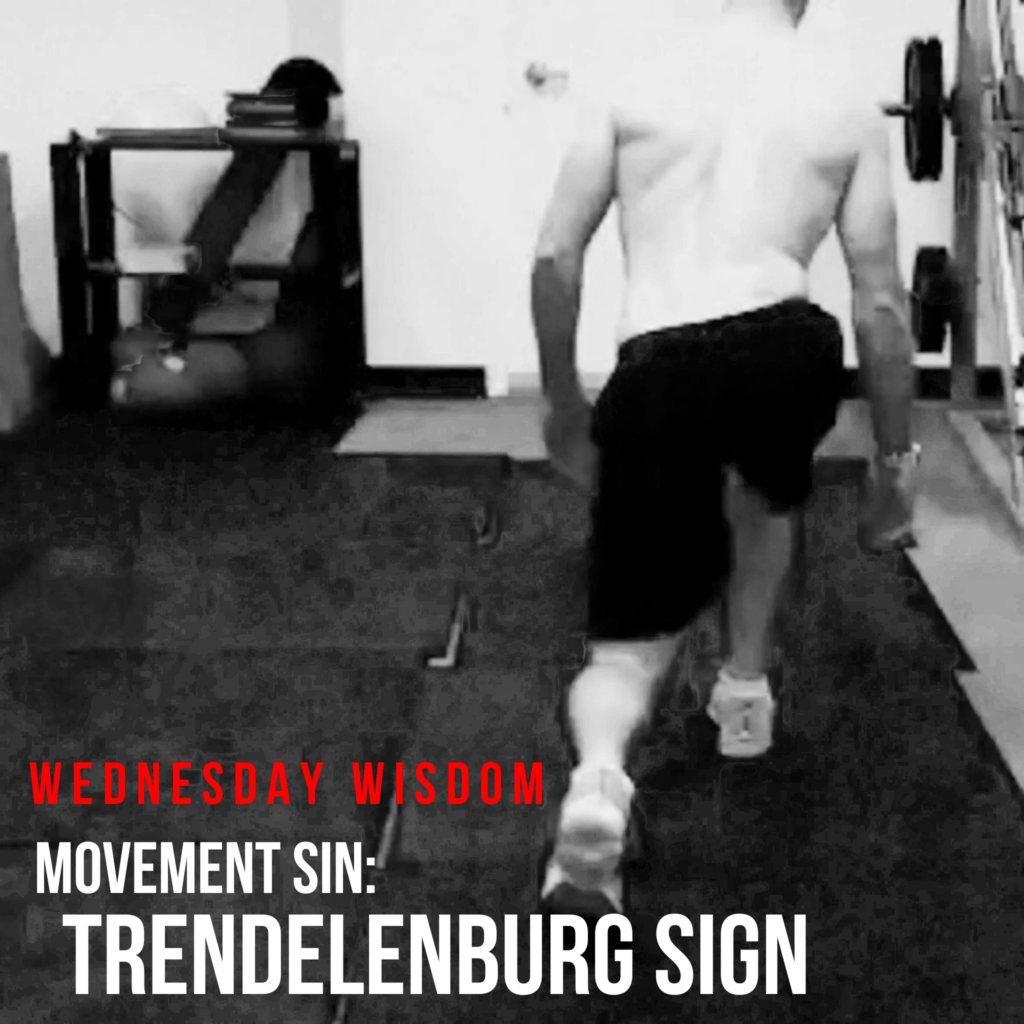In this series we’re examining the 7 most common ‘Movement Sins’ we find in our clients (and even our own) movement, as outlined by our Movement Restoration Coach certification.
Last week we looked at Medial Knee, and in this post we move on to the Medial Knee’s sister-sin, the Trendelenburg Sign.
*Why are these two sins sisters? *
Because they are very closely related and often seen together – if one has Trendy Hips it is very common to see they also move with Medial Knees.
Movement Sin:
TRENDELENBURG SIGN
This refers to the hip “drop” and poor hip control, causing the pelvis to tilt laterally as you walk, run, lunge and balance on one leg.
In this post’s image, you can see a drop in the left hip and a “hike” or rise in the right hip – this is the sign of Trendelenburg in the RIGHT hip.
It’s important to note that the higher/hiked hip is the side with the issue when looking for this sin, not the dropped side. Some people may only show signs of a “Trendy” hip on one side, while others will display it on both.
The key muscle imbalance that causes this poor movement habit is:
Tensor Fascia Lata (TFL) dominating the Gluteus Medius and deeper hip abductors such as the Glute Minimus and Iliacus.
The TFL is responsible for internally rotating the hip and flexing the hip, so as this muscle becomes hypertonic it causes the femur to internally rotate and the hips to fall into an an anterior tilt. These positions inhibit the Glute Med and other abductors from firing adequately to stabilise and balance the hip, which leads to poor hip control and Trendy patterns.
In addition, if the Adductors hypertonic (overly dominant) they too can contribute to the internal rotation of the femur, which will also inhibit the hip abductors from firing optimally and helping to stabilise and control the pelvis.
So to simplify…
Trendy Hips are commonly caused by:
A dominant TFL and Adductors taking over Glute Med and smaller hip abductors.
What do we do improve this:
- Release the dominant muscles – the TFL and Adductors.
– Hit the flexors and the adductors with some muscle release.- Activate the Glute Med and work on hip stability using single-leg balance work
- Clams, banded crab walks and lunges are the place to start here, but working on single leg balance exercises is key here.
- Use tactile and consistent verbal cues with regular practice to strengthen the hip abductors so you can hold the hips level and stable in a single-leg balance, and stepping exercises (lunges, step ups etc) before progressing to higher impact exercises like running.
- Activate the Glute Med and work on hip stability using single-leg balance work
We’d love to hear from you – what’s your experience around this…
Is this a sin you struggle with?
Do you want some more ideas on how to strengthen the abductors and eliminate this movement sin?
For for Newsletter

